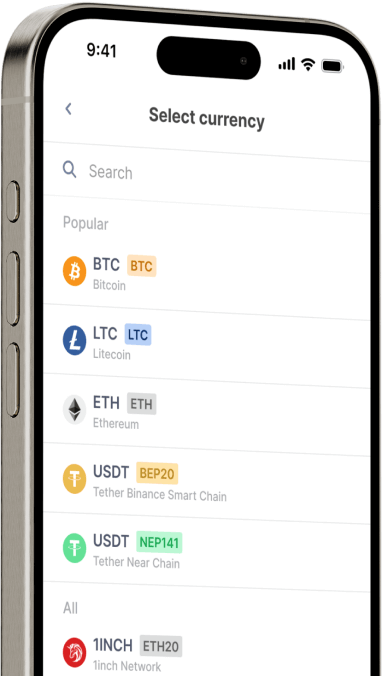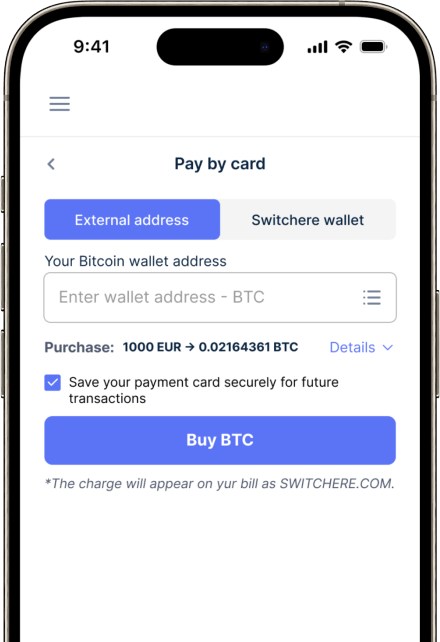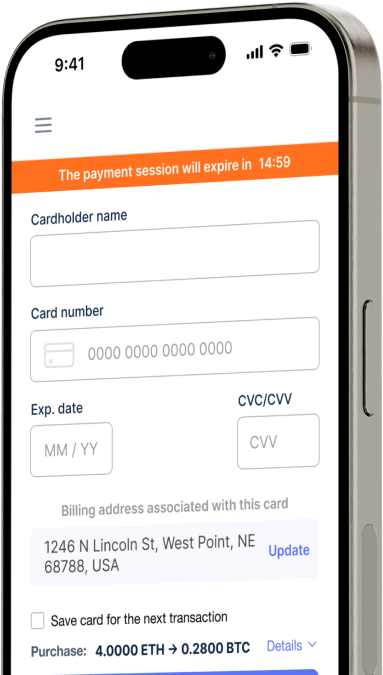Convert
Costa Rican Colon (CRC) to Celsius (CEL) Instantly
Purchase Celsius (CEL) with Costa Rican Colon (CRC) easily at Switchere and benefit from fast, secure transactions.
About
Celsius (CEL)
Celsius Network, with its native CEL token, emerged as a major centralized finance (CeFi) platform designed to bridge the gap between traditional banking and the world of digital assets. Its primary function was to offer users the ability to earn yield on their cryptocurrency holdings and to take out crypto-collateralized loans. The platform operated on a custodial basis, managing user funds to generate interest income through lending activities to institutional borrowers. This model positioned it as a user-friendly alternative for crypto holders seeking to put their assets to work without navigating complex DeFi protocols.
The CEL token was the core of its loyalty and rewards system. As a utility token, holding and using CEL provided tangible benefits within the Celsius ecosystem, such as preferential interest rates for both earning and borrowing. Users could receive higher yields on their deposited assets and lower rates on loans, with rewards often distributed weekly in the form of CEL. This tokenomics structure was designed to incentivize user loyalty and drive demand for the native asset. However, the platform faced significant operational challenges and market pressures, which ultimately led to a Chapter 11 bankruptcy filing, profoundly impacting its users and reshaping the narrative around risk in the CeFi lending industry.
Buy Other 150+ Cryptocurrencies for Costa Rican Colon (CRC)
Other Coins for Costa Rican Colon (CRC)
-
CRC to ZRX
-
CRC to 1INCH
-
CRC to AAVE
-
CRC to ACH
-
CRC to ALGO
-
CRC to TLM
-
CRC to ANKR
-
CRC to APE
-
CRC to NFT
-
CRC to API3
-
CRC to APT
-
CRC to ARPA
-
CRC to AUDIO
-
CRC to AVAX
-
CRC to AVAX
-
CRC to AXS
-
CRC to BADGER
-
CRC to BAL
-
CRC to BNT
-
CRC to BAT
-
CRC to BNB
-
CRC to BSW
-
CRC to BSV
-
CRC to BLUR
-
CRC to BONE
-
CRC to CTSI
-
CRC to CELR
-
CRC to CELO
-
CRC to CEL
-
CRC to LINK
-
CRC to CHZ
-
CRC to CHR
-
CRC to C98
-
CRC to COMP
-
CRC to CFX
-
CRC to PEOPLE
-
CRC to CVX
-
CRC to ATOM
-
CRC to CTC
-
CRC to CRV
-
CRC to DAI
-
CRC to DASH
-
CRC to MANA
-
CRC to DENT
-
CRC to DGB
-
CRC to DYDX
-
CRC to XEC
-
CRC to EOS
-
CRC to ETC
-
CRC to ENS
-
CRC to ETHW
-
CRC to FET
-
CRC to FIL
-
CRC to FLOKI
-
CRC to GALA
-
CRC to GNO
-
CRC to ONE
-
CRC to HBAR
-
CRC to HOT
-
CRC to HOOK
-
CRC to ICX
-
CRC to ILV
-
CRC to IMX
-
CRC to INJ
-
CRC to ICP
-
CRC to IOST
-
CRC to IOTX
-
CRC to JASMY
-
CRC to JST
-
CRC to KAVA
-
CRC to KCS
-
CRC to KSM
-
CRC to KNC
-
CRC to LDO
-
CRC to LQTY
-
CRC to LPT
-
CRC to LOOKS
-
CRC to LRC
-
CRC to LUNA
-
CRC to MKR
-
CRC to MASK
-
CRC to EGLD
-
CRC to ALICE
-
CRC to NEAR
-
CRC to XEM
-
CRC to NEXO
-
CRC to NOT
-
CRC to NMR
-
CRC to OKB
-
CRC to OMG
-
CRC to ONT
-
CRC to EDU
-
CRC to OP
-
CRC to OGN
-
CRC to CAKE
-
CRC to PAXG
-
CRC to PENDLE
-
CRC to DOT
-
CRC to POL
-
CRC to QTUM
-
CRC to QNT
-
CRC to RDNT
-
CRC to XRD
-
CRC to RVN
-
CRC to REN
-
CRC to RSR
-
CRC to RLC
-
CRC to RPL
-
CRC to SFP
-
CRC to SHIB
-
CRC to SKL
-
CRC to SXP
-
CRC to STND
-
CRC to STG
-
CRC to XLM
-
CRC to GMT
-
CRC to STORJ
-
CRC to STMX
-
CRC to SUSHI
-
CRC to SNX
-
CRC to USDT (Polygon)
-
CRC to USDT (AVAC)
-
CRC to USDT (BEP20)
-
CRC to USDT (ERC20)
-
CRC to USDT (SPL)
-
CRC to USDT (NEP141)
-
CRC to USDT (FA2)
-
CRC to USDT (TRC20)
-
CRC to USDT (JETTON)
-
CRC to XTZ
-
CRC to GRT
-
CRC to SAND
-
CRC to TFUEL
-
CRC to THETA
-
CRC to RUNE
-
CRC to TON
-
CRC to TUSD (BEP20)
-
CRC to TUSD (TRC20)
-
CRC to TWT
-
CRC to UOS
-
CRC to UMA
-
CRC to UNI
-
CRC to USDC (Polygon)
-
CRC to USDC (SPL)
-
CRC to USDC (OP)
-
CRC to USDC (BEP20)
-
CRC to USDC (AVAC)
-
CRC to USDC (ARB)
-
CRC to USDC (ERC20)
-
CRC to VET
-
CRC to VRA
-
CRC to WAXP
-
CRC to WOO
-
CRC to WLD
-
CRC to WBTC
-
CRC to WMINIMA
-
CRC to XDC
-
CRC to YFI
-
CRC to YGG
-
CRC to ZIL
How to Buy Celsius (CEL)
Frequently Asked Questions
-
What is the primary method for purchasing Celsius (CEL) with Costa Rican Colón (CRC)?
A direct CRC/CEL trading pair is extremely rare. The standard method involves a multi-step process: first, use a local Costa Rican fiat on-ramp that accepts CRC, possibly via SINPE or bank transfer, to buy a major cryptocurrency like Bitcoin (BTC) or a stablecoin (USDT). Then, transfer that digital asset to an international cryptocurrency exchange that still lists the CEL token and execute a trade from BTC or USDT to CEL. This indirect route is necessary due to the low liquidity and availability of the CRC/CEL pair.
-
What was the original technical function of the CEL token on the Celsius platform?
CEL is an ERC-20 utility token on the Ethereum blockchain. Its primary technical function within the Celsius Network's centralized finance (CeFi) model was to serve as a loyalty token. Users could earn higher yields on their deposited digital assets by choosing to receive interest payments in CEL tokens. Additionally, holding certain tiers of CEL in their portfolio qualified them for lower interest rates on crypto-collateralized loans and provided better returns through the 'Earn' program.
-
How does the security of a digital wallet factor into acquiring CEL tokens?
Since CEL is an ERC-20 token, it must be stored in a digital wallet compatible with the Ethereum blockchain. Given the risks surrounding the Celsius platform, it is critical not to store CEL on a centralized exchange for long periods. Best practice involves transferring the tokens to a non-custodial wallet (like MetaMask or a hardware wallet) where you control the private keys. This secures your assets from exchange-specific risks like insolvency or delisting, which are particularly relevant to the CEL token.
-
What are the significant risks associated with the CEL token due to the Celsius Network's status?
The primary risk is that Celsius Network filed for Chapter 11 bankruptcy. This event rendered the original utility of the CEL token (e.g., earning rewards, loan discounts) largely obsolete. The token's value is now highly speculative and driven by market sentiment surrounding the bankruptcy proceedings. There is a substantial risk of delisting from exchanges and extreme price volatility. Holders are considered unsecured creditors, meaning their claims are low in priority during asset distribution.
-
Are there regulated cryptocurrency exchanges in Costa Rica for trading CRC directly to CEL?
No, there are no known regulated cryptocurrency exchanges, either locally in Costa Rica or internationally, that offer a direct CRC/CEL trading pair. The Costa Rican regulatory framework for digital assets is still developing. Any transaction involving this pair would require using an international platform, which necessitates completing their specific KYC/AML compliance procedures and using the indirect conversion method previously described.
-
What are the typical fees when using Costa Rican Colón (CRC) as a fiat on-ramp?
Fees for converting CRC to crypto vary by platform. Local peer-to-peer (P2P) platforms or exchanges may have variable rates influenced by the seller. Using a bank transfer or SINPE might incur standard banking fees. International exchanges that accept CRC via third-party providers often have higher processing fees, potentially including a percentage-based service fee and a fixed transaction fee. Always compare the final amount of crypto received after all fees to determine the most cost-effective on-ramp.




